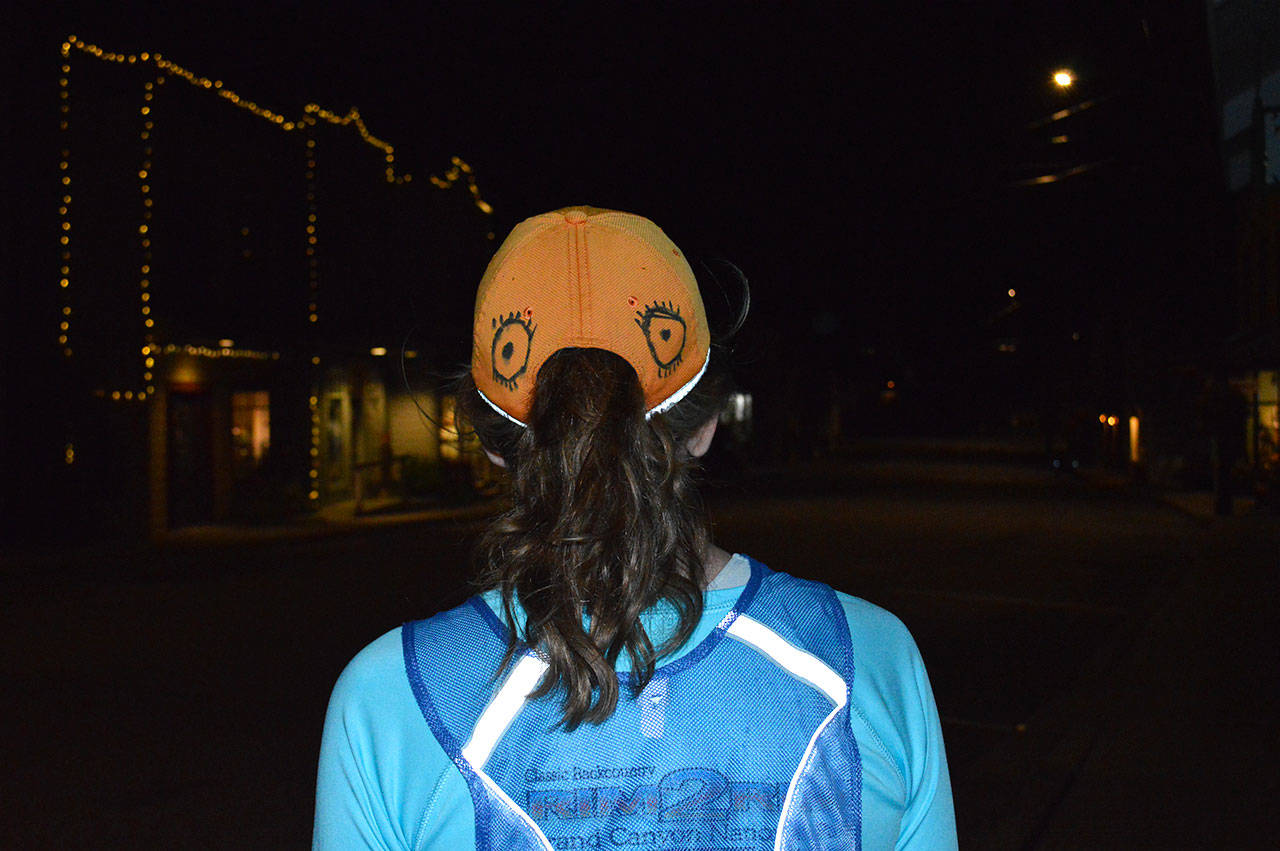Noah Landau was on a normal run on the Kettles Trails when it happened.
“I was rocking out to some tunes, totally oblivious to everything around me,” he said.
Until he suddenly felt something scratch the top of his head. When he looked up, he saw an owl flying above him and it was carrying his hat. The bird dropped the hat but remained nearby. Afraid that it would scratch him again, he picked up a stick and held it near his head.
Landau isn’t alone. Wilbur Bishop and Fran Einterz were running one day, when an owl first attacked Bishop then later Einterz. Landau’s wife Julie is also an avid runner, and she’s been swooped by aggressive owls at least four times out on the Kettles Trails.
“I hardly run out there anymore, unless I’m with someone,” she said.
These combative animals are barred owls, which have a reputation for being more aggressive toward humans.
“They are a gregarious owl,” said Gary Piazzon, a former member of the Whidbey Audubon Society. He said when the birds are nesting, they become extra territorial.
“A lot of times it happens to people running through woods; they startle the owl,” he said. “Any creature will become aggressive if it finds itself threatened.”
Nesting usually occurs in the spring, but a Whidbey News Times reporter encountered an aggressive owl on the Kettles Trail just a few weeks ago.
The Landaus, Bishop and Einterz have been running on these trails for decades, but have only had these types of owl interactions in the last couple of years. Piazzon said that is because the population of the barred owls is increasing on Whidbey Island. The raptor is originally from the south east part of the United States but has been migrating here.
Last year, a Clinton woman reported being attacked by an owl for about 30 minutes while walking through Saratoga Woods.
These birds live in forested wetland habitats, and the Kettles seem to be a popular area. Unlike other species of owls, the barred owls will often nest in close proximity and form a flock, or parliament.
There are some methods forest dwellers can employ to avoid an owl attack. Following the advice of a raptor expert, Julie drew a pair of eyes on the back of her hat.
“Most animals will not attack anything that is looking at them,” Piazzon said. Julie hasn’t had any owl-related issues since using the hat.
Piazzon said it is also a good idea to make oneself small, so as to appear less threatening. And although they appear large, owls typically only weigh about a pound and a half, he said, so people shouldn’t worry too much.
“Appreciate the owls,” he said. “We don’t know how long they’re going to be around.”



